I’ve recently reviewed the Lapizta Oryx, a hefty watch heavily inspired by Motorsport racing, which was large and pretty awesome. Now, we’re reviewing its smaller brother – the Zatara. Costing $420 / £275, at first glance it is impressive looking for the money. Just like the Oryx, the Zatara is based on a form of racing – this time nautical. Lapizta are just as clever weaving references to this maritime sport as they were with the Oryx and motorsport.
But, is it good value for money? Let’s look at it a little closer to find out.
The case
The case shape is a distinct pillowcase shape, which is always nice in appearance and frames the wrist well.
It’s not small, measuring in with a diameter of 43mm, although it doesn’t seem to actually wear that large. It also rocks a height of 16mm, which is on the tall side. It’s definitely not really designed for cuffs or smart wear, but rather the sun-soaked coast of the USA (or any nice sunny country) in a t-shirt driving a speedboat.
Lug to lug, the watch is 51mm, which is fairly average for this size watch. The lugs are angled down a suitable amount to ensure a comfortable wrap around the wrist. They feature a couple of well-made hex screws which secure the strap in place.
The case is black IP coated, which appears to be high quality and pretty thick. It feels tacky to the touch, and gives you the sense that it’ll last a good while and will be able to handle any small knocks or scrapes. It’s finished in a way that mimics a brushed finish.
The bezel is inspired by a steering compass found on ships – which you can see from the inward slant of the insert, the bold numbers and the red and white dashes. These markings are all engraved and painted with extremely impressive precision. The bezel action is also delightfully smooth and sounds a pleasant click at every point. The bezel lines up perfectly too, which believe it or not, is something relatively simple that eludes some manufacturers.
The bezel also boasts a pretty mean toothed edging, which actually reminds me of a tactical watch.
The Zatara has a mineral crystal with sapphire coating. Some manufacturers prefer these as they believe it is the best of both worlds: the scratch resistance of sapphire, with the shatter resistance of mineral. I think it’s pretty good, it’s nice and thick, and also has a reasonable layer of anti-reflective coating.
The pushers are a more polished finish than the case, so it provides a small bit of contrast there. They work well, giving good feedback during use, and are surrounded by a knurled cylinder at their base, which matches the grip of the crown.
The screw-in crown is 8mm in diameter, so it’s definitely not subtle. The texture imitates the extension of dials and gauges found on a speedboat according to Lapizta (I’ll have to take their word for it). The thread is good quality, so you don’t feel like you’re going to cross-thread it every time you change the time or date (not that you’d have to do that much). It also has the Lapizta infinity logo raised on the end, surrounded by a matt base. The grip is definitely suitable for the crown, giving you good purchase on it. It looks the part, but is not too aggressive.
The Zatara has a 100m water resistance rating, which is suitable for swimming, poolside diving or snorkelling. But it’s not designed for more extreme depths such as normal diving. Although many of us won’t actually go down that far, it’s a surprise that it’s a water sports watch, but is not a greater water resistance rating. You’d sort of expect 150/300m. Chances are it’s because it’s a chronograph, so it’s the pushers that would be hindering the depth rating.
The Zatara has a screw-in caseback, which is stainless steel- so you have to appreciate that the rear of the watch has two different colours.it has a brushed outer ring and a polished centre circle which houses all the details. These surround a matt disc with the Lapizta logo and slogan on. The caseback is all very neatly made and finished.
As is the case with the Oryx, the Zatara has the Lapizta word engraved down the left side of the case. This actually looks pretty good, thanks to it looking a little bit subtle due to the black IP case. It certainly doesn’t quite look as tacky as an Invicta.
The case is all very well made, with a high level of fit and finish. I think the size is decent, as it’s impressive, provides a lot of wrist presence, but is not too over the top.
The dial
In an opposite direction to the Oryx, the dial on the Zatara is very flat, matt, and devoid of any texture. That’s not to say it’s boring though. In fact, there’s a few clever design features taken from sailing.
The dial as a whole is designed in a way to mimic the instrument dials on a boat – my thoughts are it’s probably the minute track, subdials – and bezel markings that make this connection. They are quite similar in design to a speedometer and the like.
The hour and minute hands are quite unusual in design – they emulate the hoisted sails of a sailing boat. They’re red, and a pointed tear drop shape with a skeletonised centre. It’s a bit annoying that they aren’t lumed in any way, so telling the time in the dark is impossible. The only lumed aspects of the Zatara are the hour markers in the outer minute track, and the big central chronograph seconds hand. A decision that has confused me. Still, the lume is pretty weak so you can’t see it most of the time anyway.
The big central seconds hand is a simple and effective white stick with a thin rectangular counter weight. The subdial hands are full arrows with a rounded base – again, very simple, but with very good legibility.
The subdials are designed to emulate the controls found on a speedboat. Again, quite minimalistic thanks to the not having a border or any detailing as such. Just white printed lines located at every interval.
The minute track is also a minimalistic affair, with printed white lines at every minute, broken up by red numerals at 12, 3, 6 and 9, and then larger lumed batons at the remaining hours. The printing is all fine and precise, although the lume leaves much to be desired.
The date window is simply cut out of the dial. It’s done with excellent precision, so no border is necessary. The date wheel is black with white numerals which is definitely the right way to go. It’s extremely subtle, yet there when you need it. The black of the wheel is matched so perfectly with the dial that it is almost camouflaged.
The printing across the entire dial generally is very good, nice and crisp. The dial is in essence rather clean in design. It’s functional, but I like the design cues that are brought in from the nautical theme. Lapizta have certainly done what they’ve set out to do, the dial does indeed appear to be inspired by a yaught or speedboat. Just the one negative in the lume to keep in mind.
The movement
The movement powering the Zatara is pretty much the most popular affordable Quartz chronograph, that being the Miyota OS20. It’s rather unremarkable, yet quietly does its job patiently and without letup.
Suitably dubbed as a workhorse movement, it’ll take a battering, and keep on ticking away – so you have no need to be concerned about whether it’ll get damaged. I’ve never had one fail on me yet.
It’ll last you 5 years on a single battery, and that’s if you use the chronograph for an hour every day. It has an accuracy of +/-20 seconds a month, which is perfectly suitable for a Quartz.
I do like having a chronograph, as I tend to use it everyday – to time my dog walks. Interestingly, when the hour is up, it continues on to the next hour rather than stopping. This is actually pretty handy when your timing runs over an hour. But you’ll have to be aware to stop it as if you leave it running for an extended amount of time it’ll run the battery down.
The strap
The strap is 22mm wide at the lugs, reducing to 20mm at the buckle. I find this a suitable size that balances the weighty case well.
It’s made of silicone rubber, which does tend to pick up fluff and lint during everyday wear. It’s a cool, dark, black – matching the colour of the IP coated case. It also has a few nice design features on it – namely three channels running along the length of the strap on the top, which is met with the Lapizta infinity symbol (lemniscate) at either end in between the lugs. The underside has a mesh texture to it, to grip the wrist well whilst letting it breath. It also has the Lapizta logo underneath.
The strap only has one keeper loop. But, I haven’t found the strap end coming loose out of the loop at all, which is surprising. The loop has a pretty firm grip on the strap, plus the strap itself isn’t the longest. Usually I’m on the second hole of a strap (I’ve got a 7-7.5″ wrist), but with this one I’m on the fourth. There’s still plenty to go, as in 4 more holes. So if you’ve got a large wrist there’s no need to worry that it won’t fit.
The silicon is very soft, not stiff in the slightest, and and as a result, surprisingly comfortable. It doesn’t leave the wrist sore or red in the slightest, which can be the case with some rubber straps.
The buckle is the same IP coating as the case, so it matches impeccably.
The competition
As was the case with the Oryx, I think the Meister Ambassador is a suitable competitor. It’s priced well (a little bit less than the Zatara), has a similar style of case, and matches the Zatara in chunkiness.
Alternatively I think we could go down the tool watch direction. In this case, I think the Obris Morgan Explorer is an excellent alternative. It’s not a chronograph, but is an automatic at a cheaper price of around $280.
Final comments
I personally believe that this is a real solid watch for the money. It’s pretty hard to find one as imposing as the Zatara on a similar budget of under £300. Just don’t expect to see it in the dark due to the lume. Of course, as is the case with every watch, it may not be for some – but for those of us who enjoy a big (but not too massive), well-made watch that insists attention, doesn’t spare anything in terms of wrist presence, and has a tie-in with a nautical theme, then I’m happy to recommend the Lapizta Zatara.
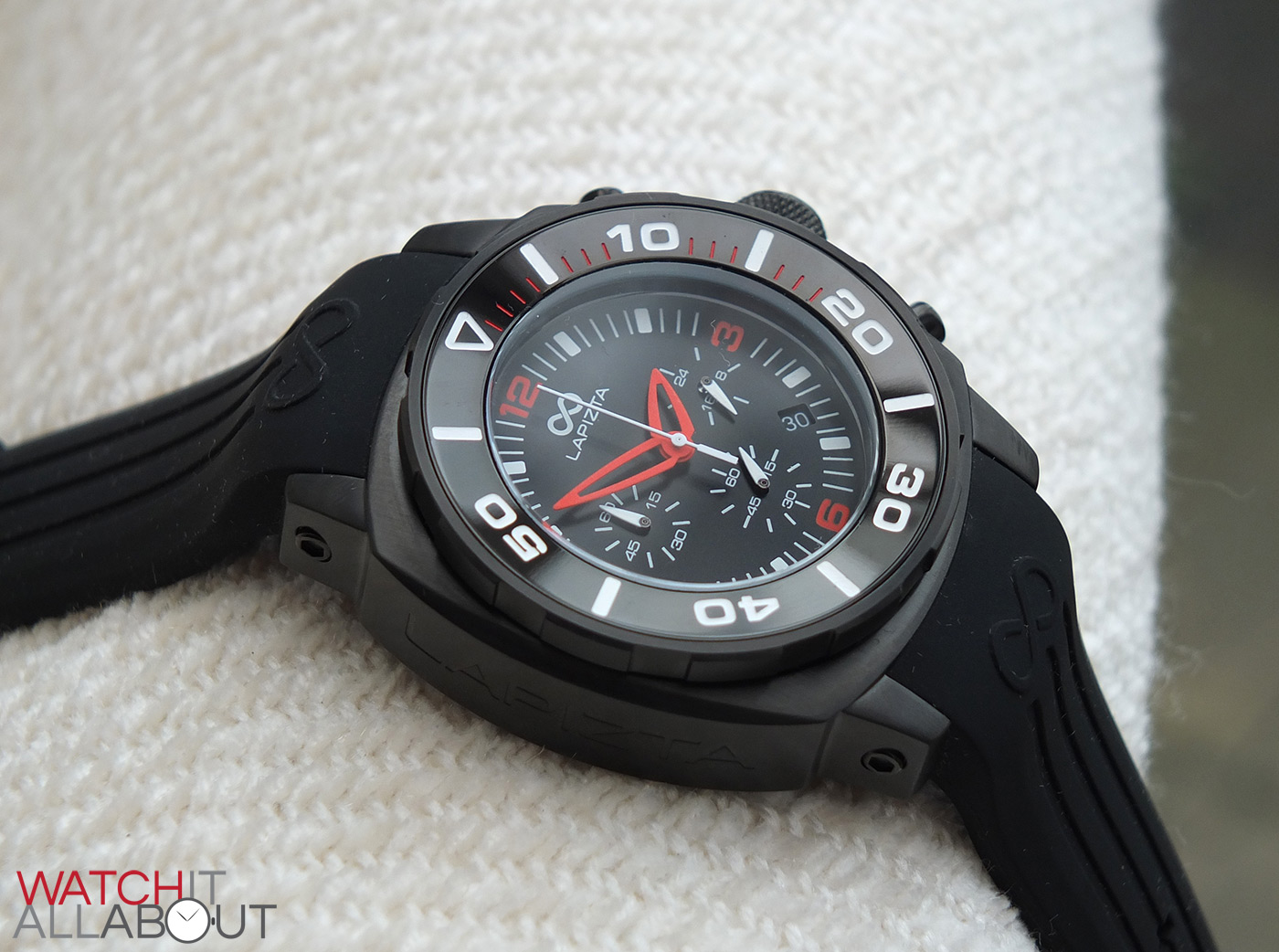
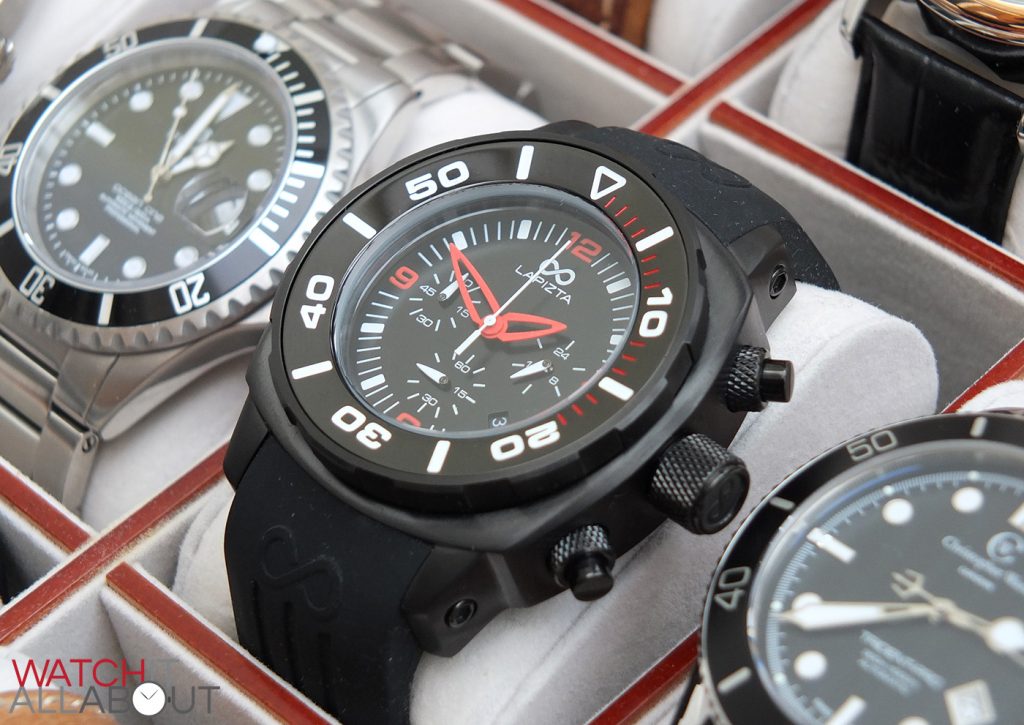
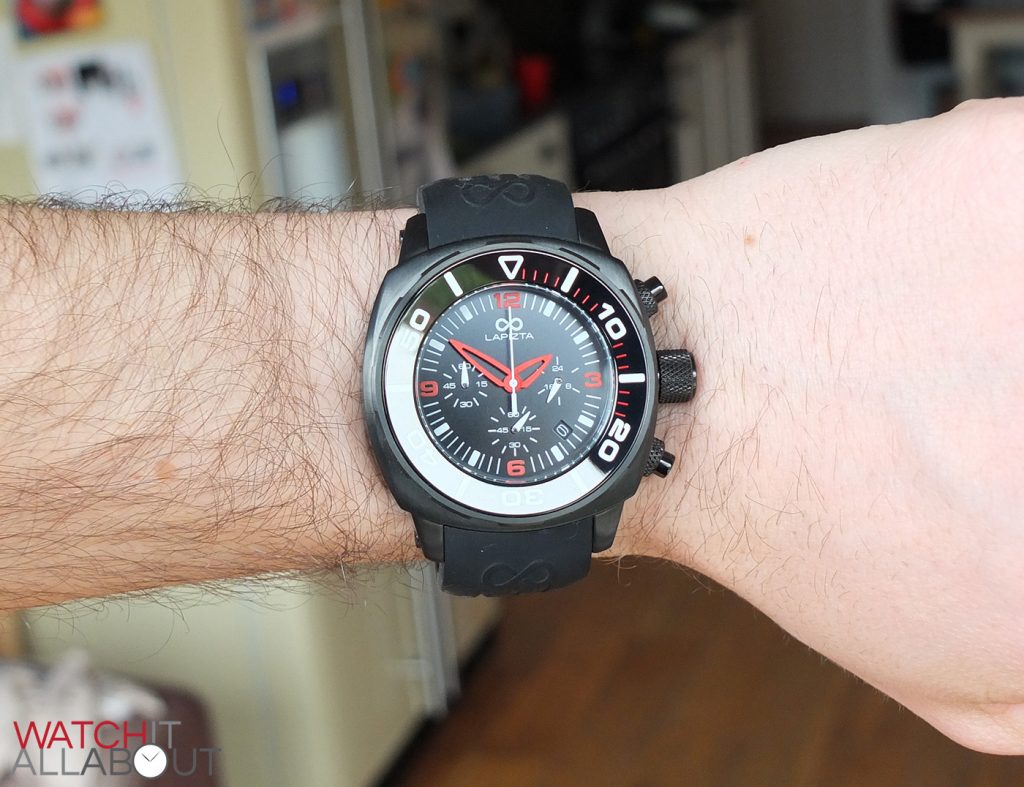
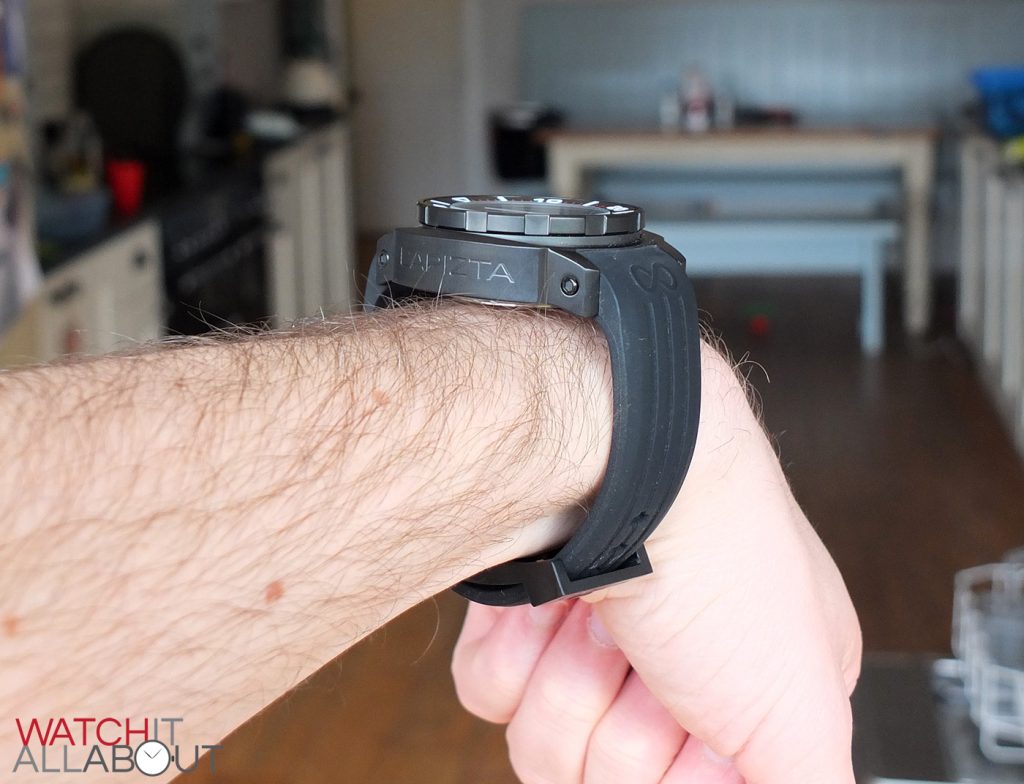
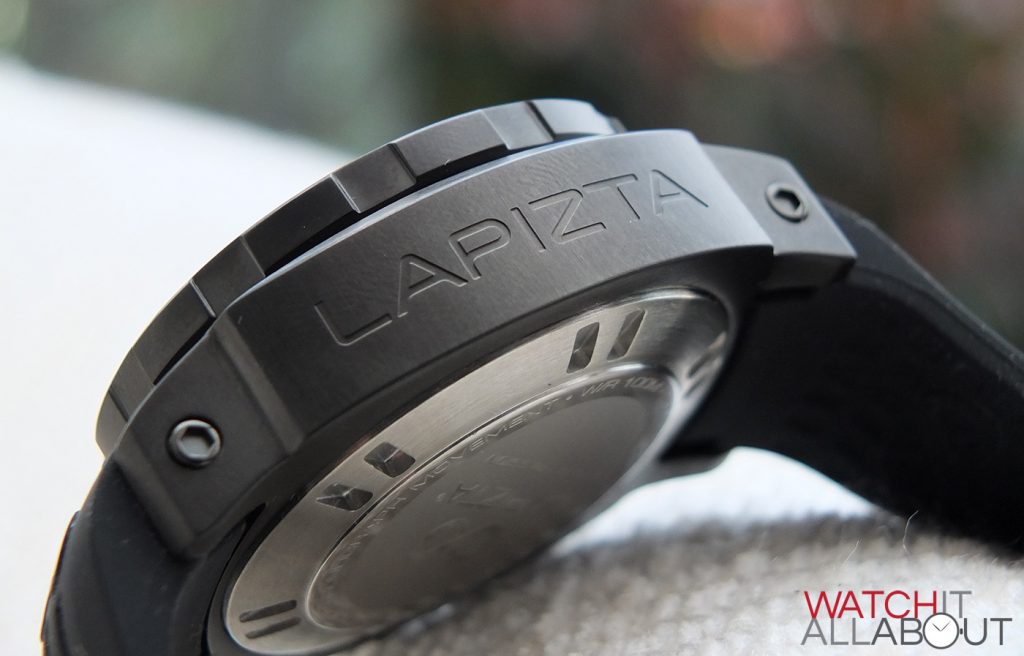
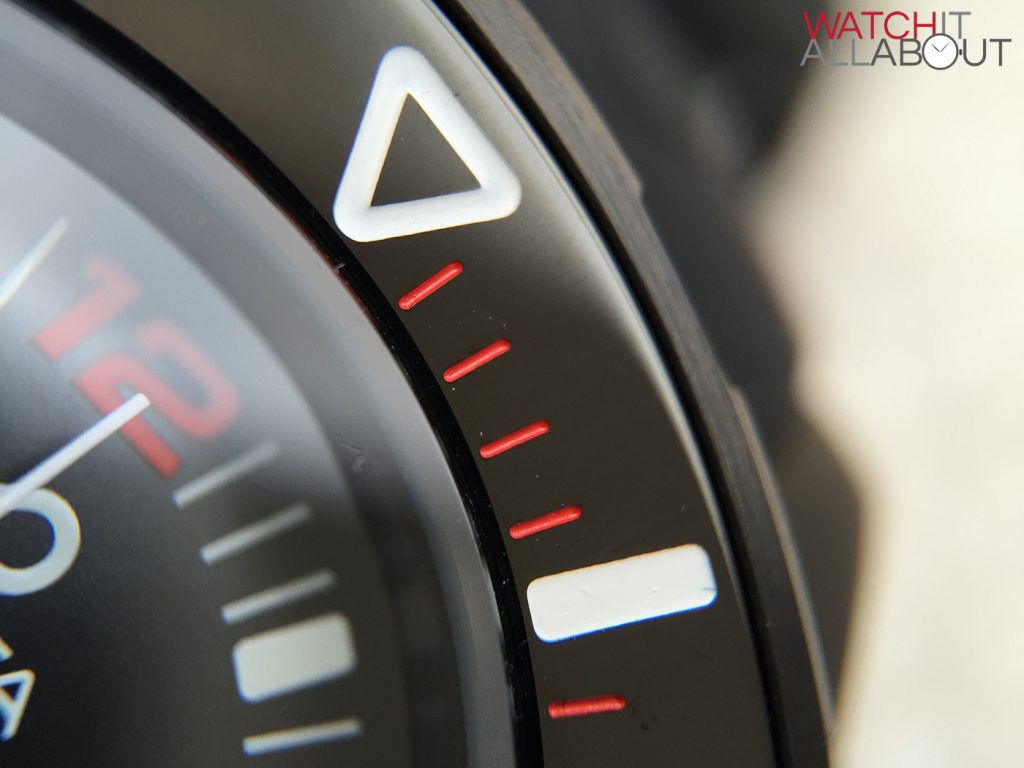
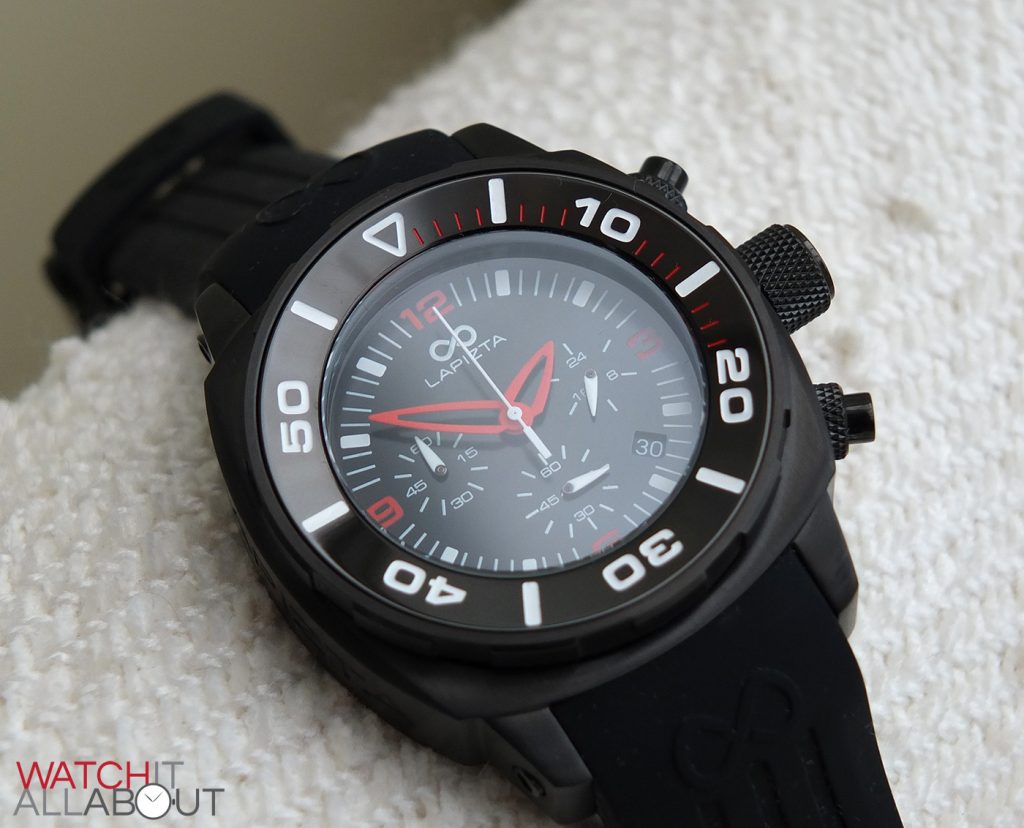
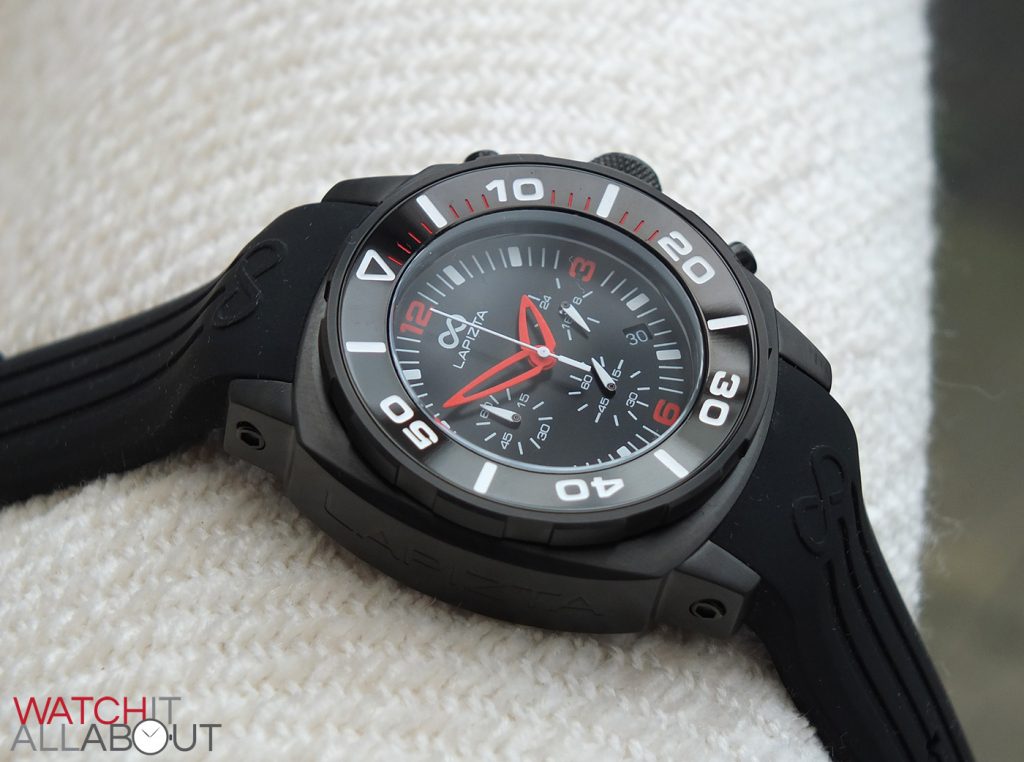
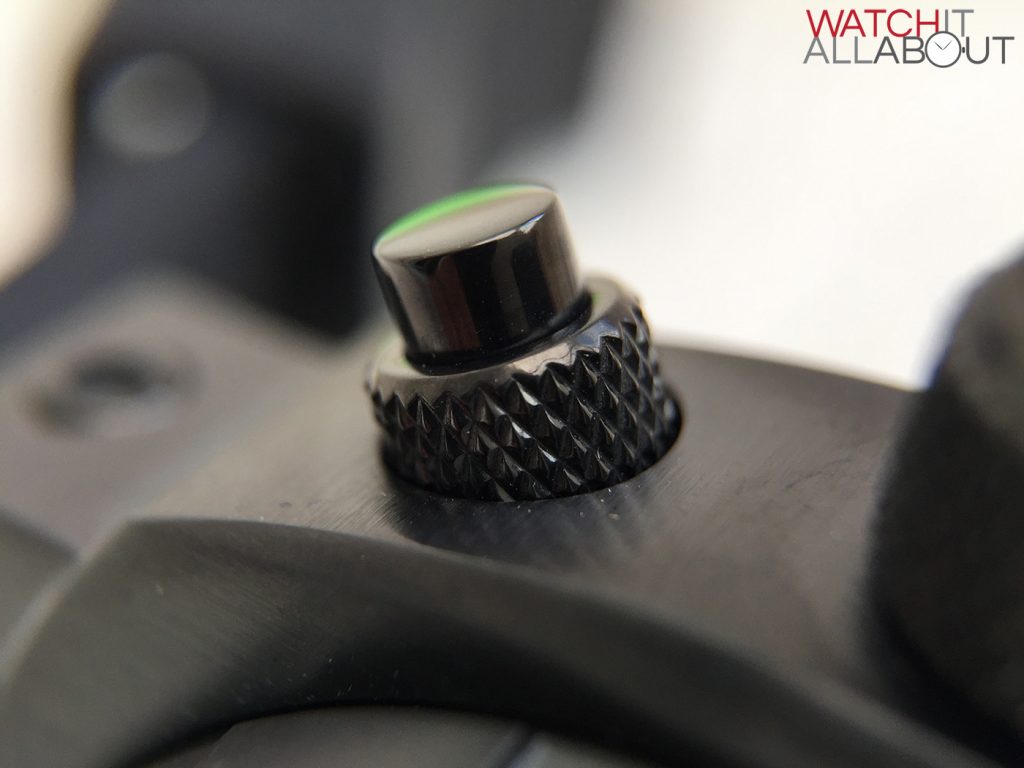
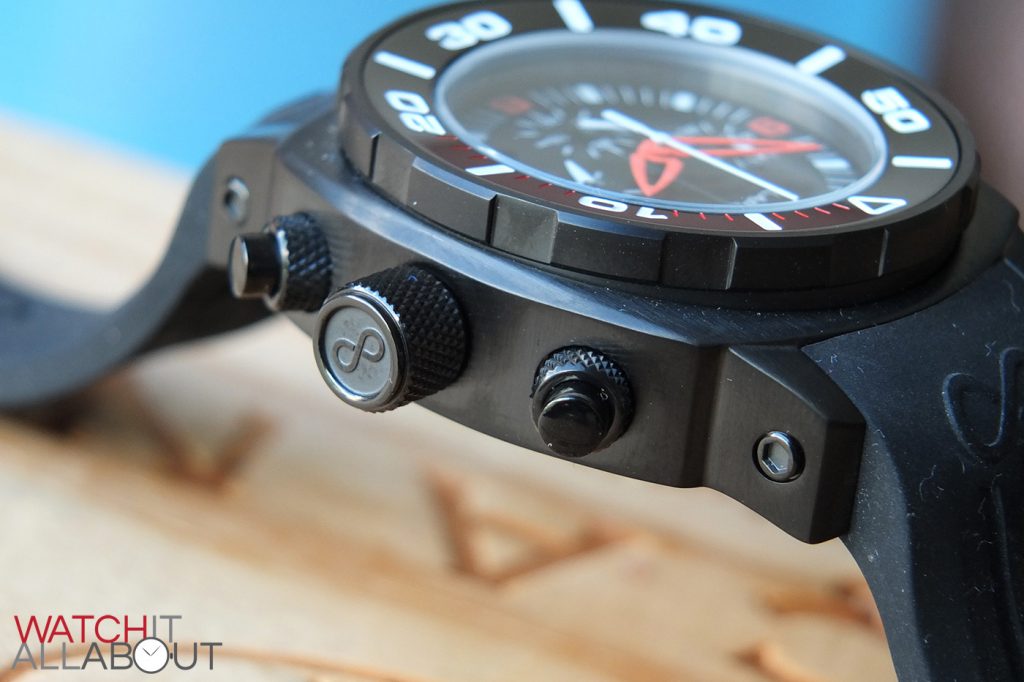
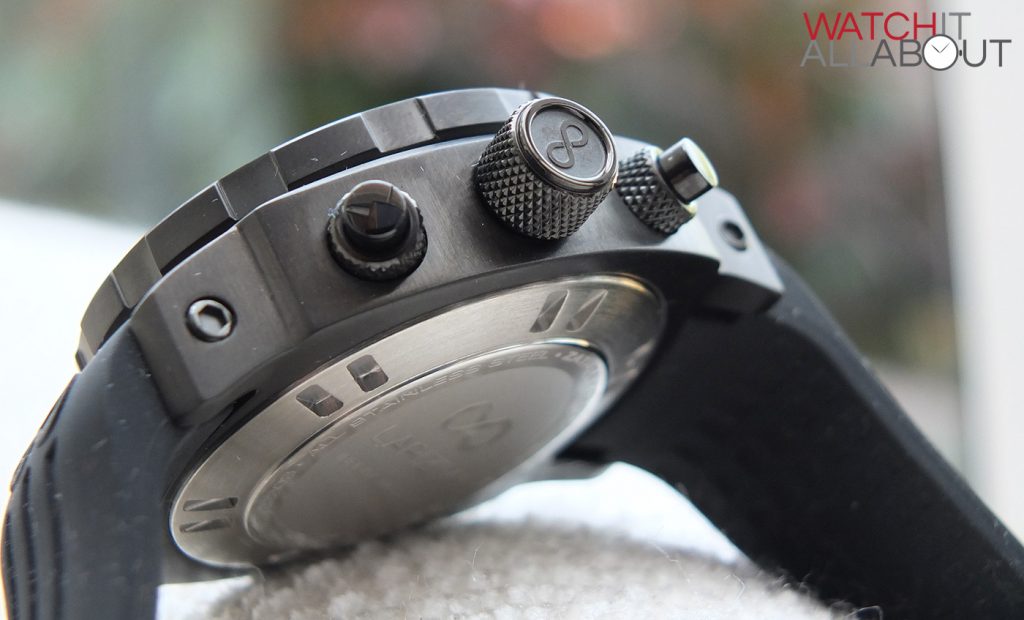
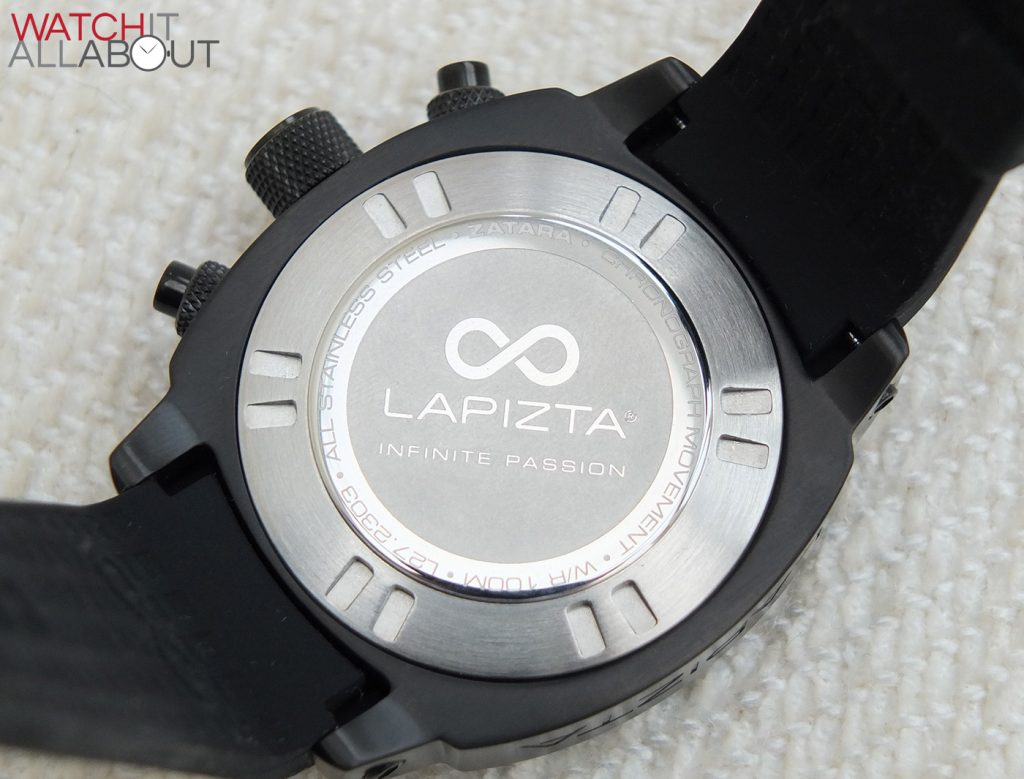
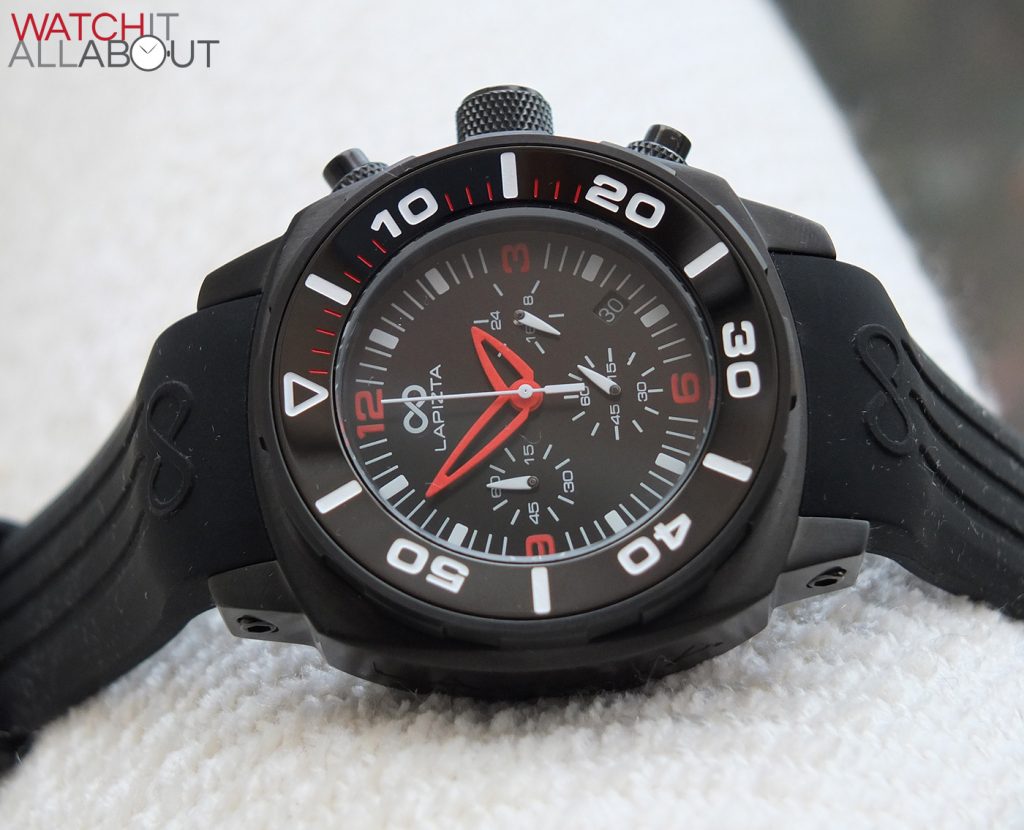
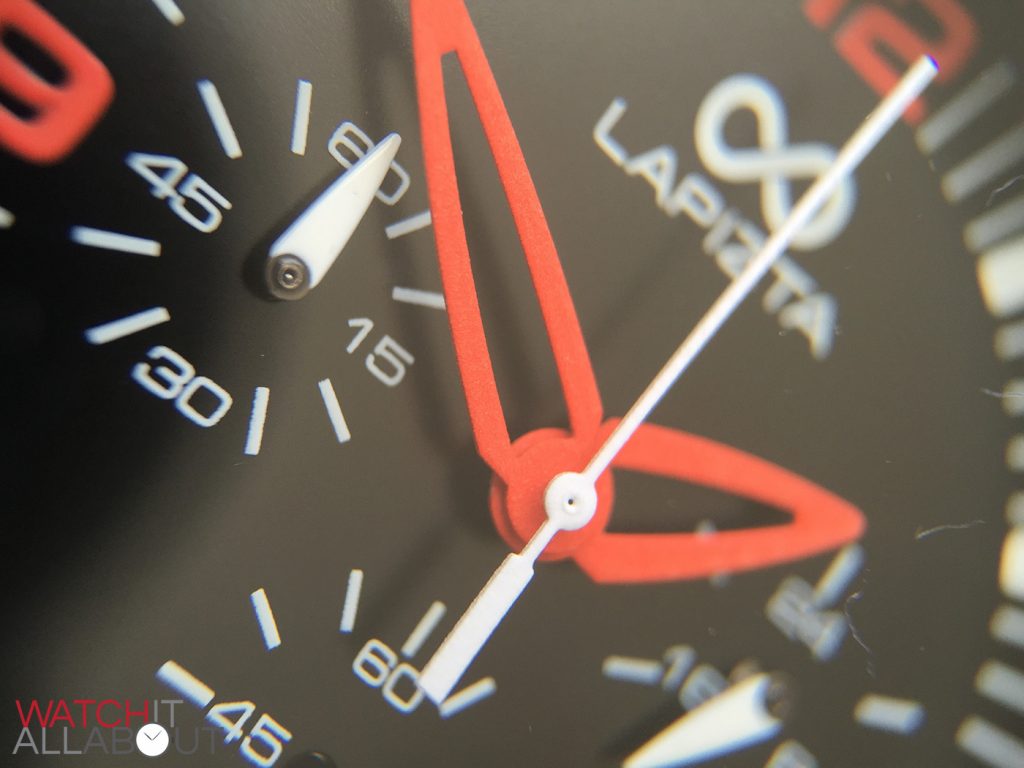
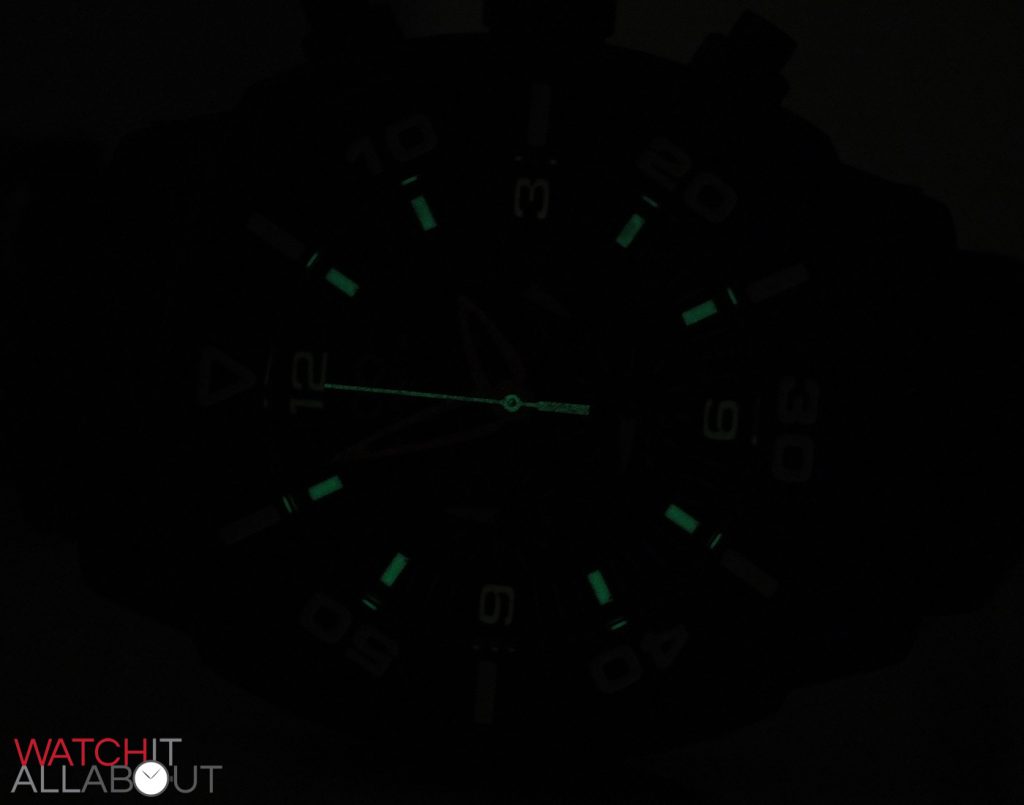
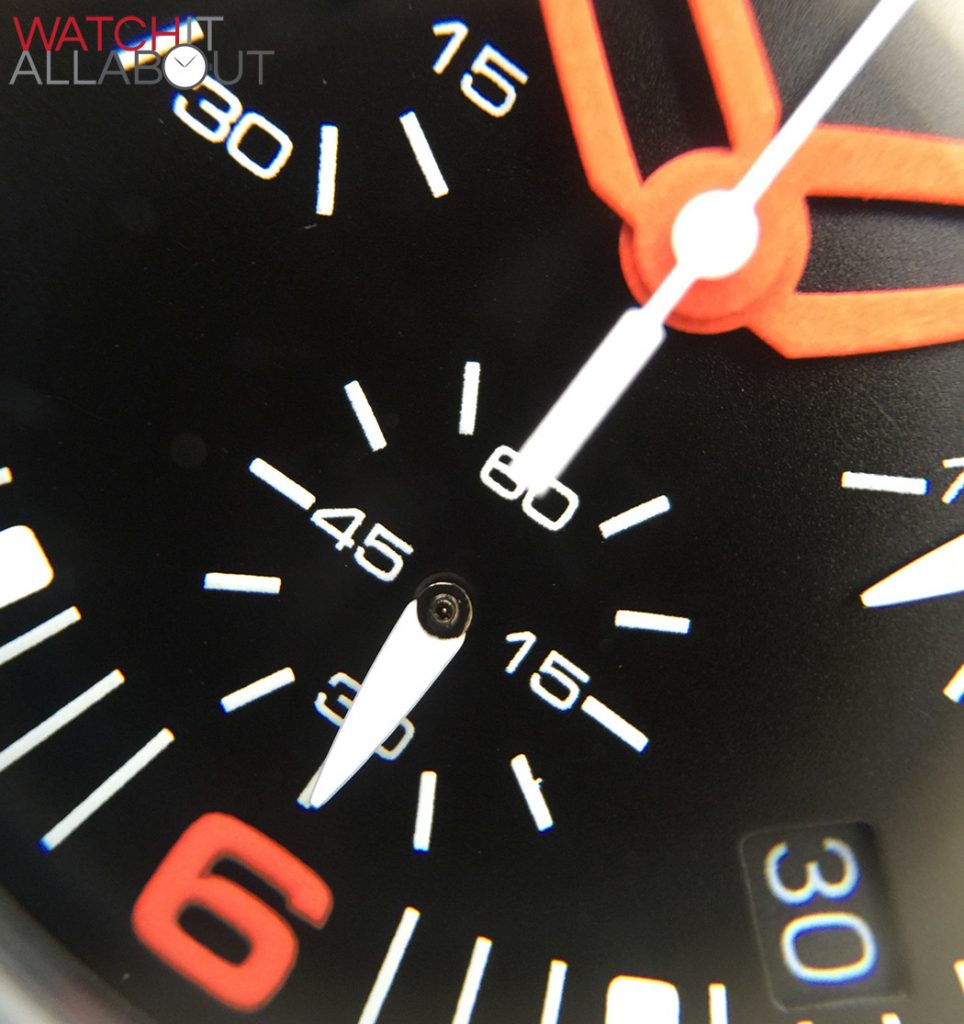
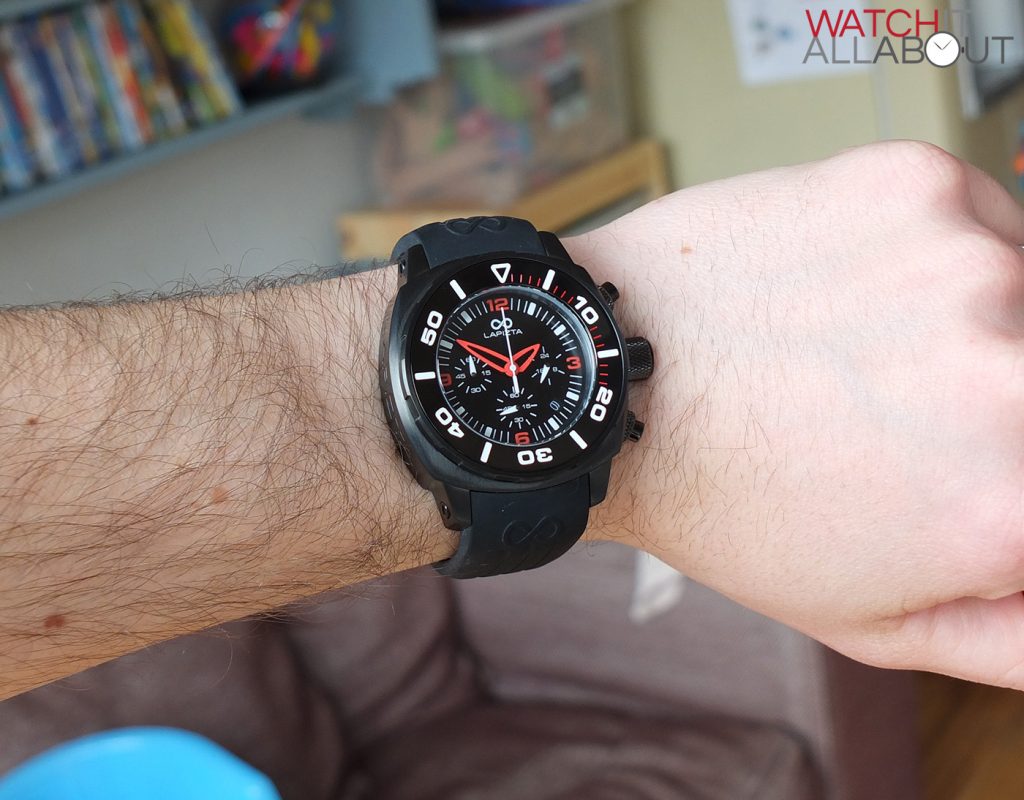

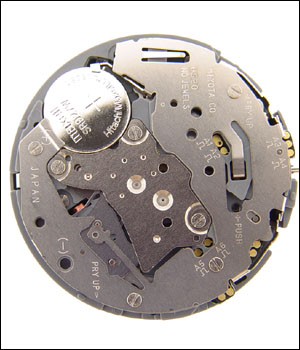
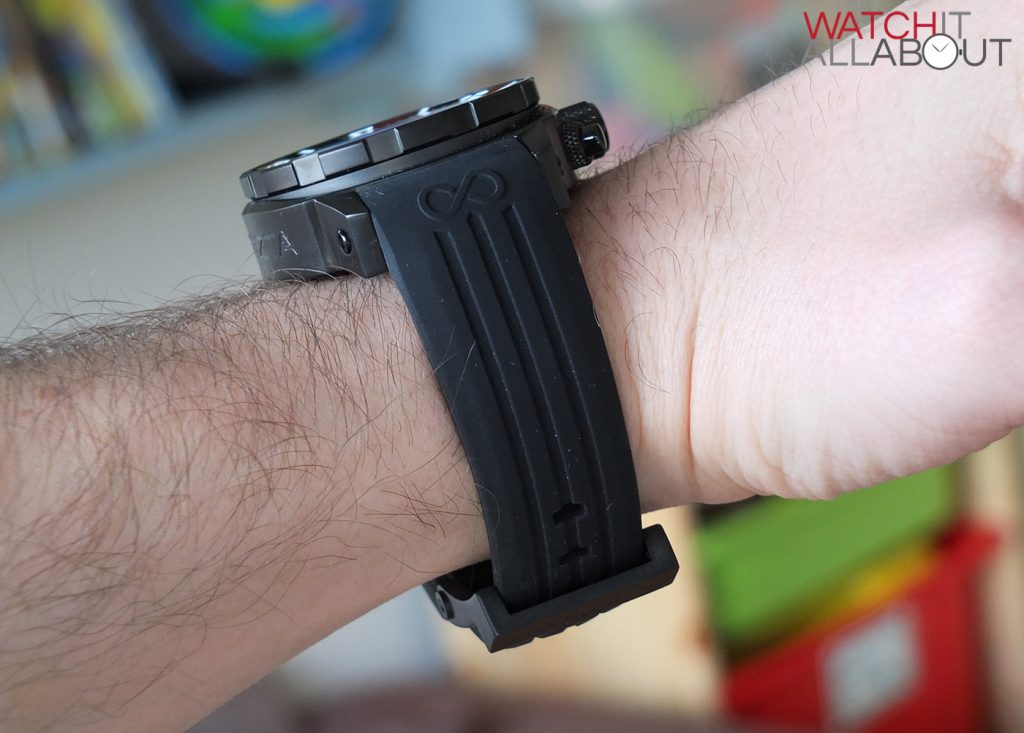

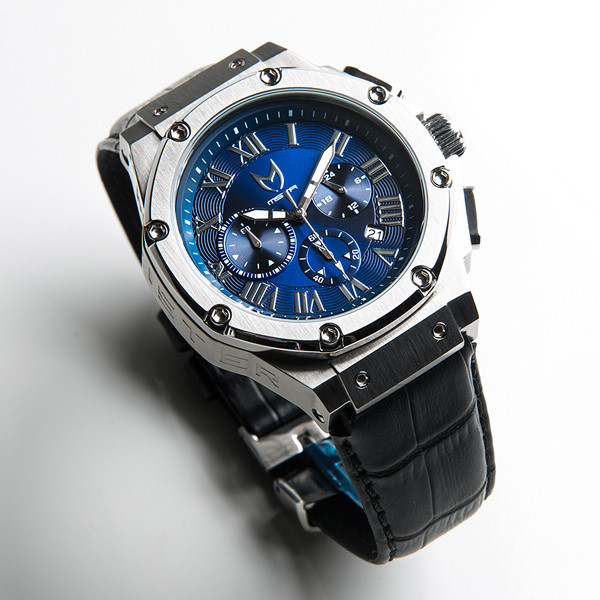
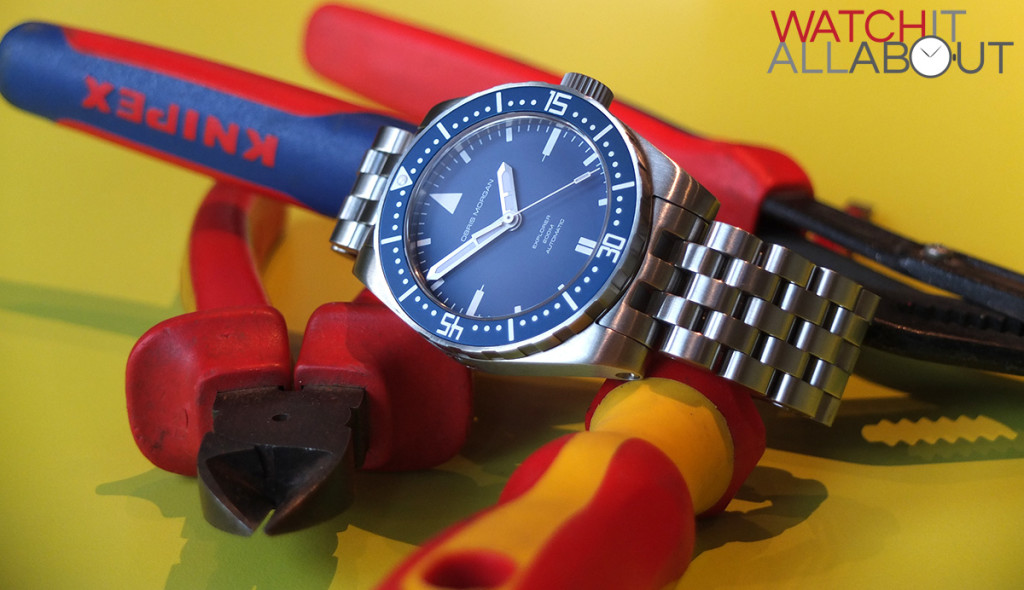
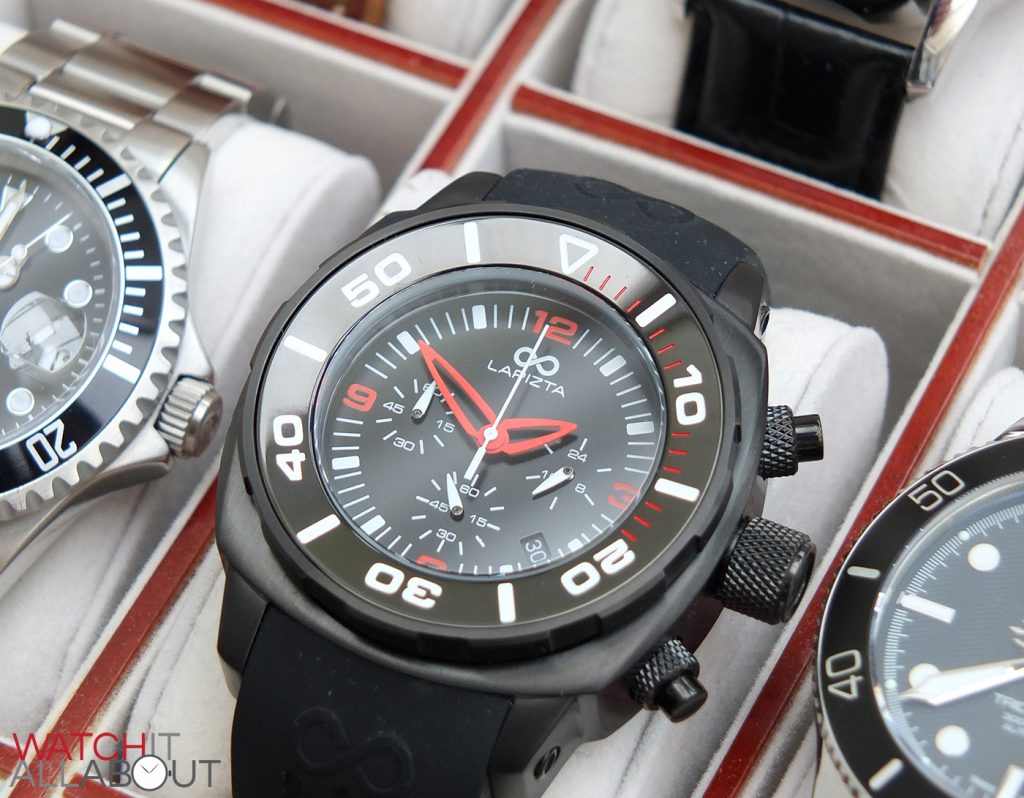

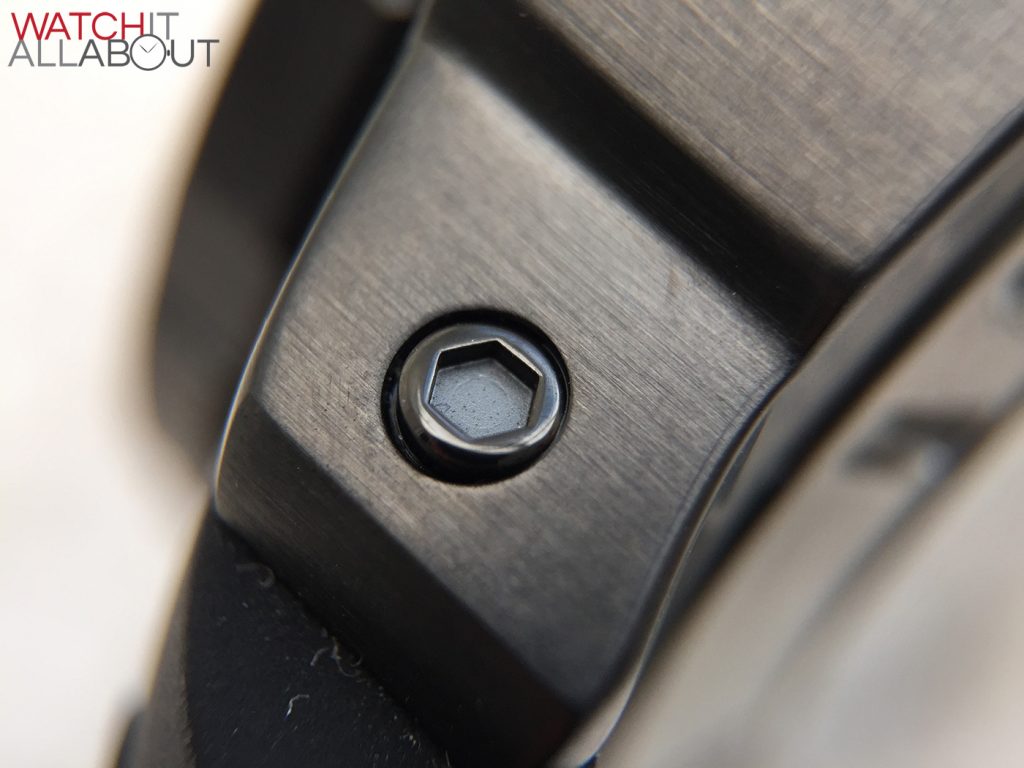
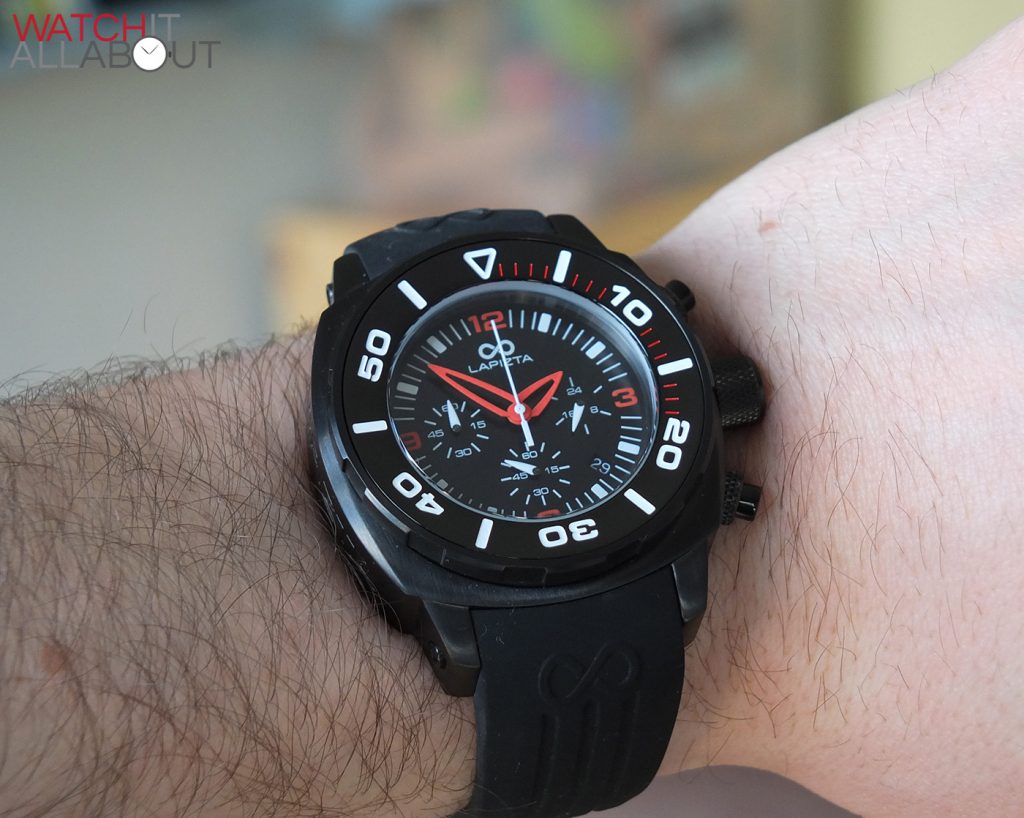

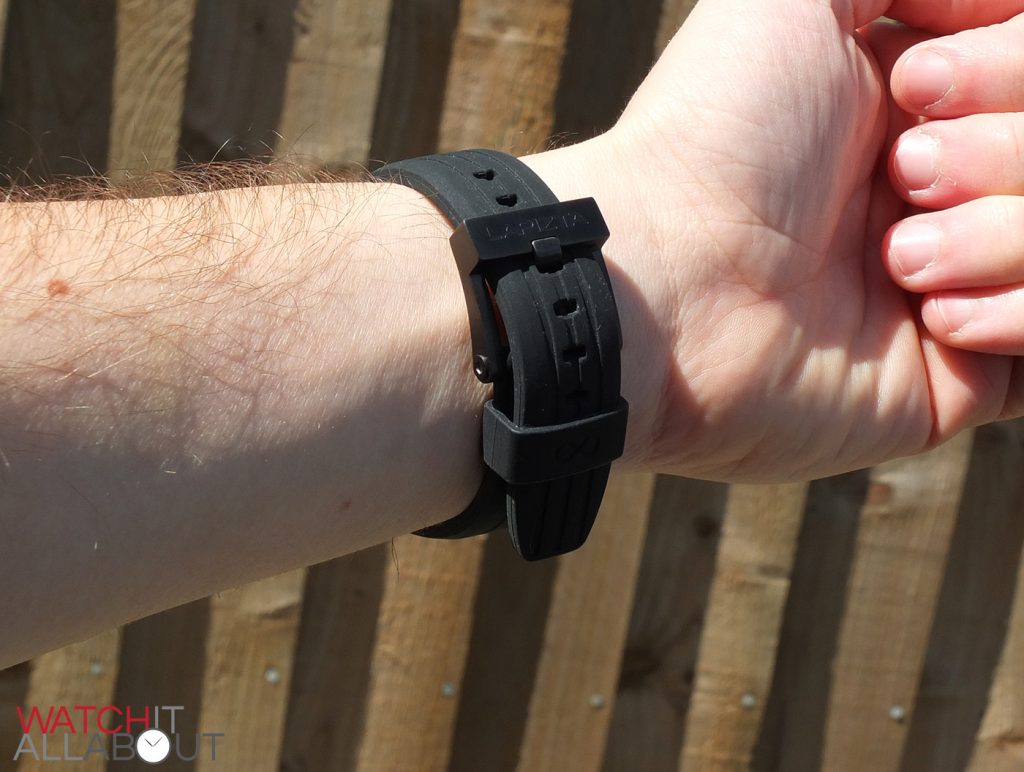
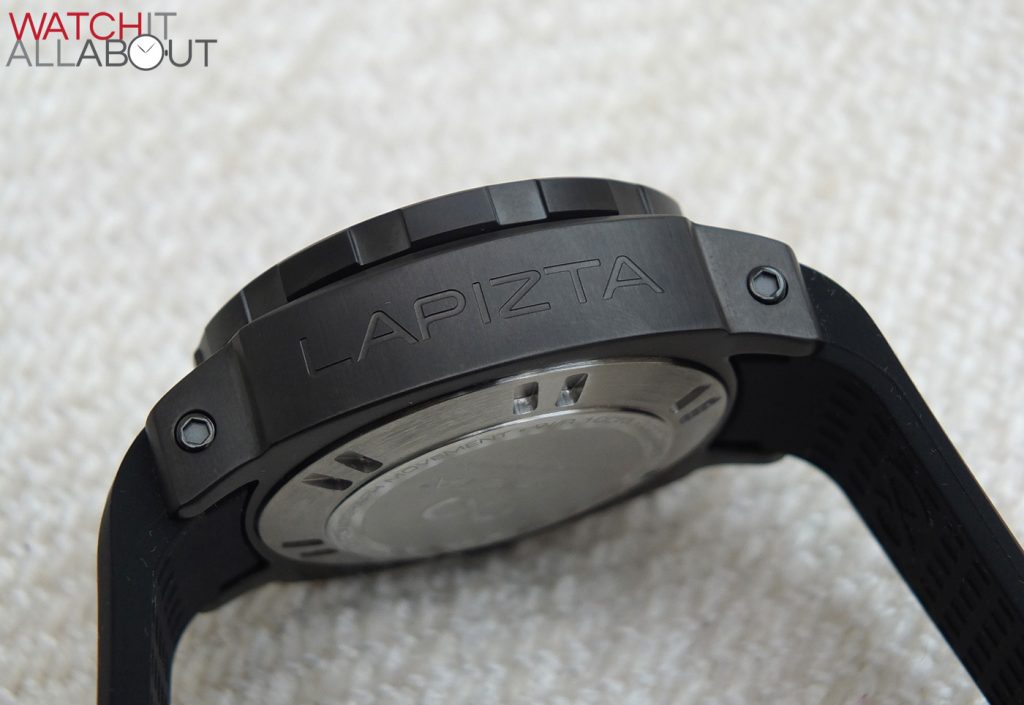
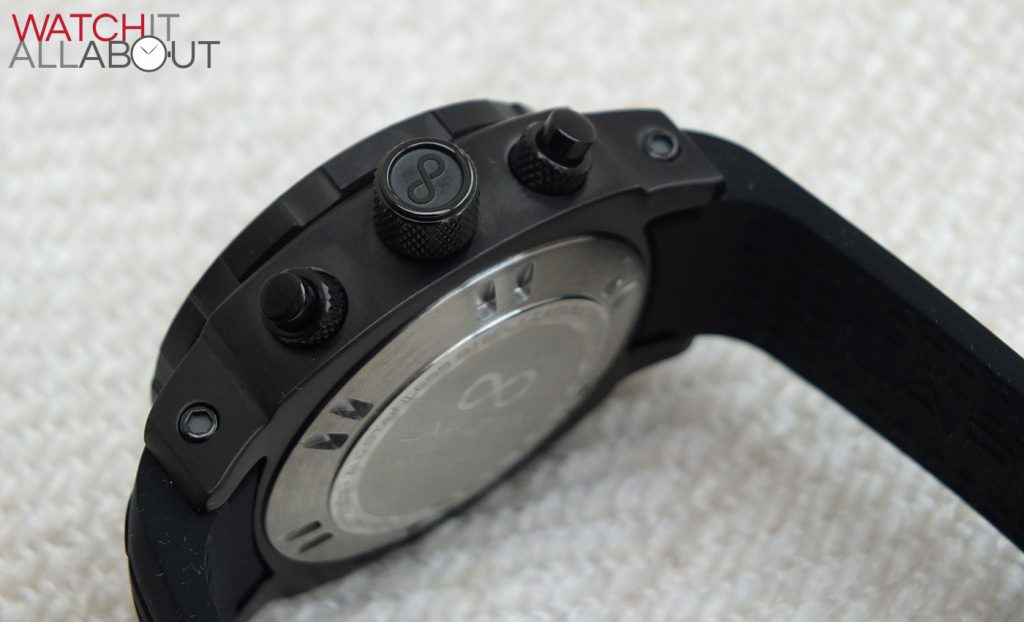
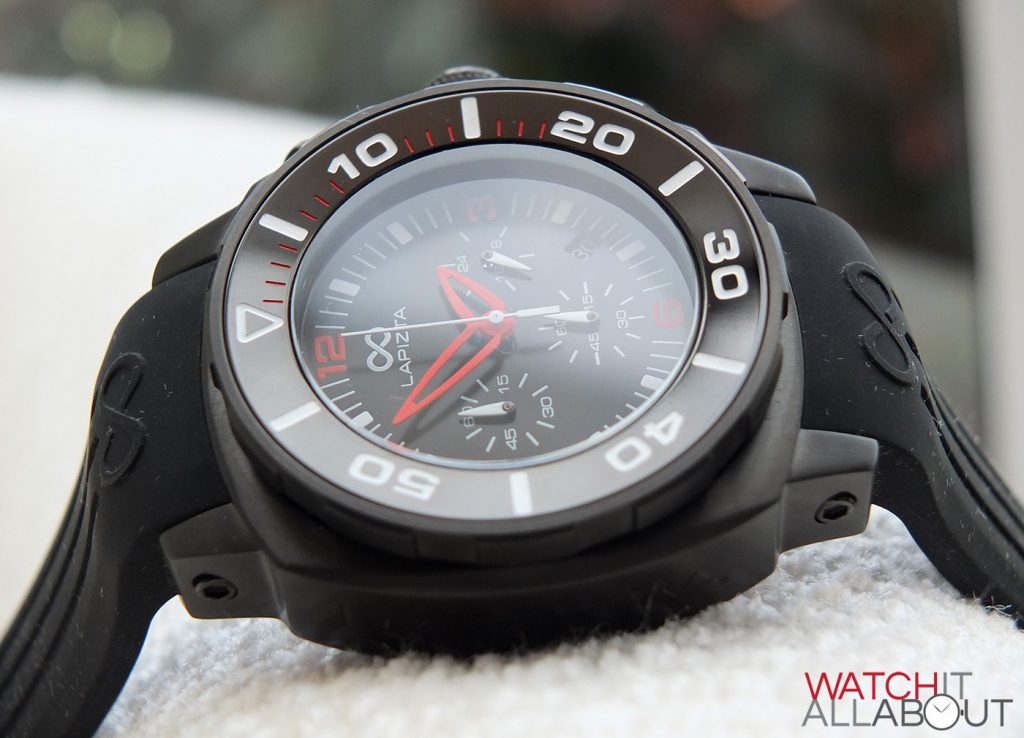
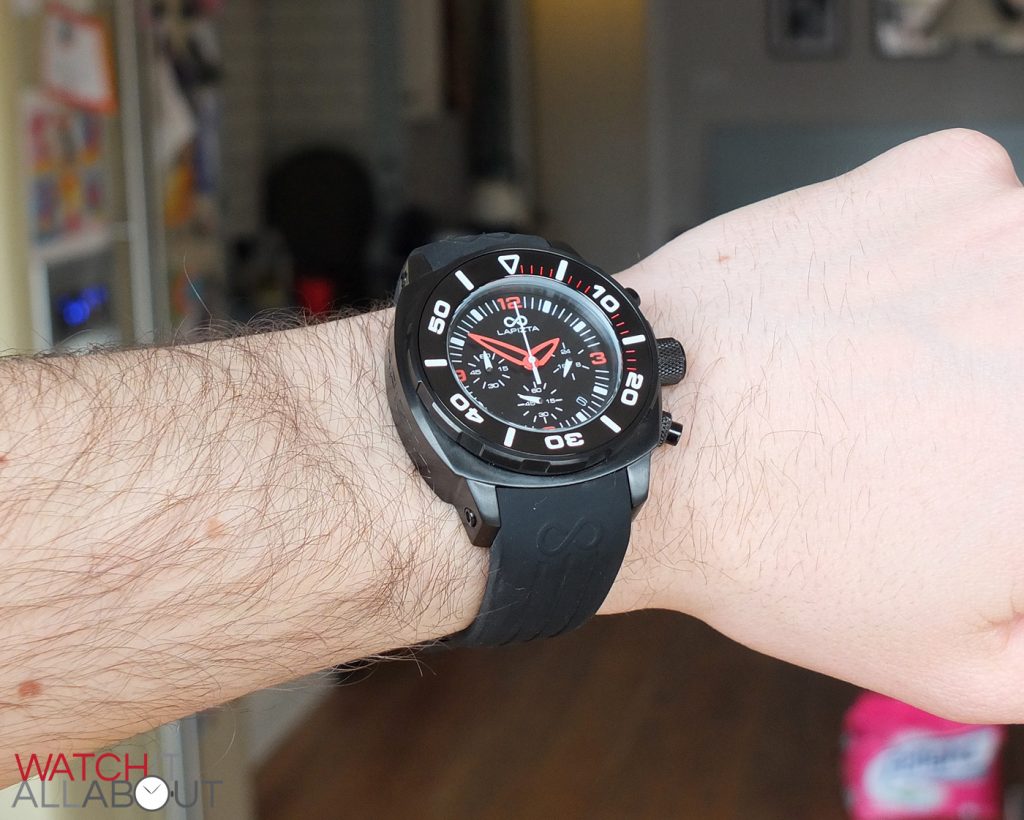
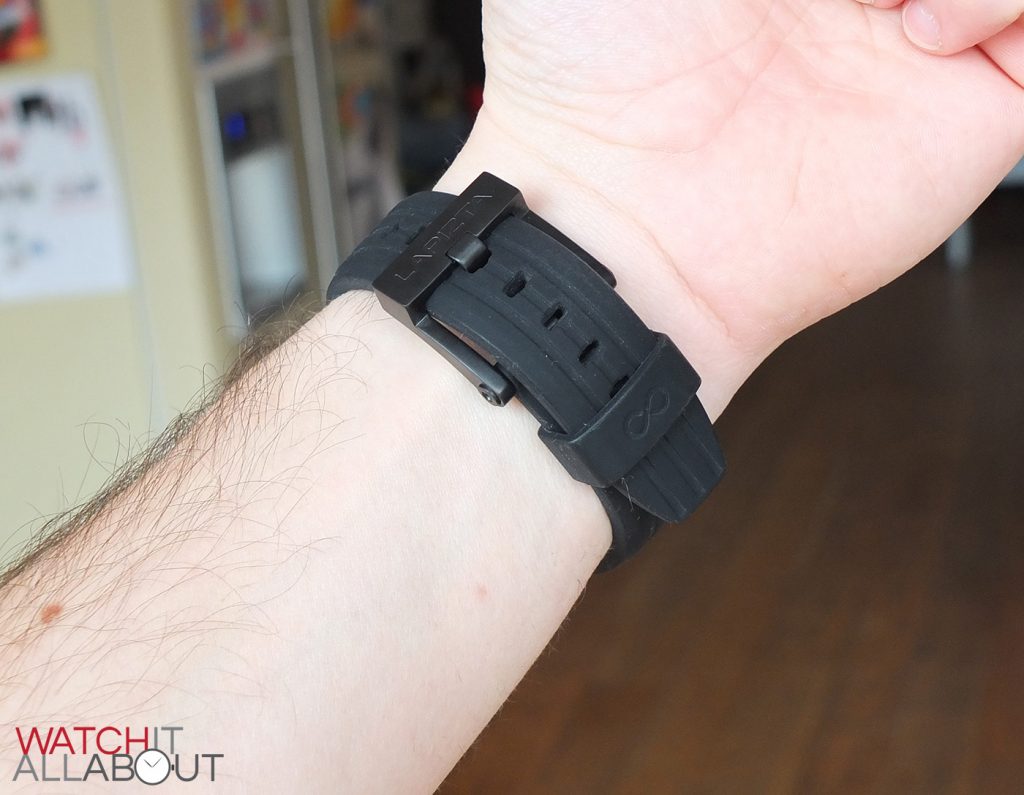

Alex
15 May, 2015 at 1:19 pm
Based on the photos alone, if I were to see this on someone’s wrist, I would think it was a cheap department store watch. Photos alone are never enough though and the video goes a long way to reverse this perception. The performance level of the watch is clearly there. It all makes me glad I don’t design watches. That must be a tough gig.
Zachary
7 March, 2021 at 1:35 am
I have this watch but it is impossible to get a replacement rest band for it